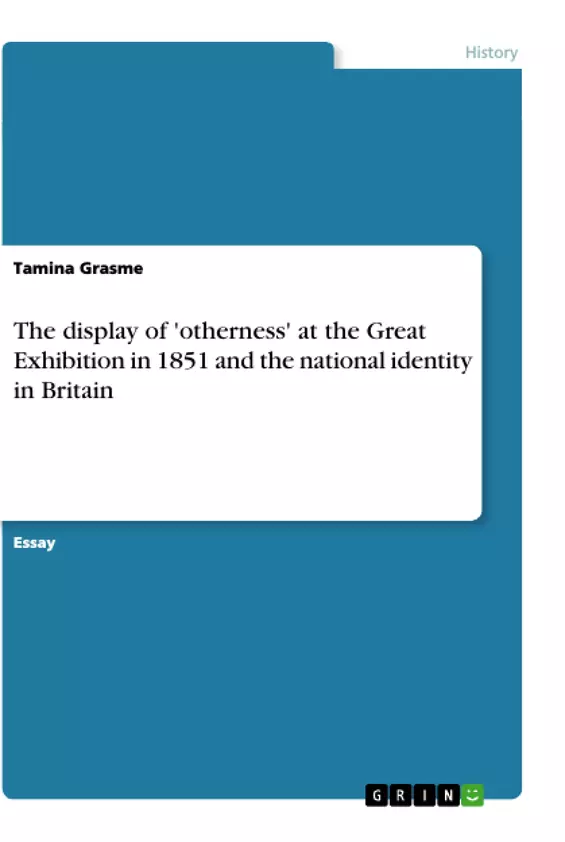On the 1st of May in 1851, the opening of the Great Exhibition marked the beginning of the creation of a corporal British identity which was drafted through dissociation from other foreign stereotypes. Although Prince Albert, head of the organising Royal Commission, wanted the Great Exhibition to create international family-like ties among the exhibiting states, it stressed the differences between those nations and supported rising nationalism instead.
The very fact that the Royal Commission structured the exhibition into the United Kingdom, its colonies and foreign countries, revealed its focus on British instead of global achievements. However, as well as the exhibition’s location, the manner in which it was presented is also of great significance, since it demonstrated superiority.
Inhaltsverzeichnis (Table of Contents)
- How the display of 'otherness' at the Great Exhibition in 1851 created a national identity in Britain
- India's Representation at the Great Exhibition
- The Display of Industry and Manufacturing
Zielsetzung und Themenschwerpunkte (Objectives and Key Themes)
This essay examines the role of 'otherness' in constructing a British national identity during the Great Exhibition of 1851. The focus is on how India's representation in the exhibition contributed to this process, highlighting the contrasts between the perceived 'civilized' West and the 'exotic' East.
- The construction of 'otherness' and its role in defining British identity.
- The portrayal of India at the Great Exhibition as a symbol of both exotic glamour and barbaric inferiority.
- The impact of the exhibition on British perceptions of colonialism and their duty to 'civilize' their colonies.
- The use of displays of industry and manufacturing to further establish British superiority.
- The role of the Great Exhibition in creating a sense of national pride and unity among the British people.
Zusammenfassung der Kapitel (Chapter Summaries)
- The essay begins by exploring the significance of the Great Exhibition in shaping a sense of British identity, arguing that it was based on a distinction from 'other' cultures, particularly those of colonial possessions.
- The essay then delves into the specific case of India's representation at the exhibition. It shows how India was portrayed as both an exotic and fascinating land, but also as a place that was in need of British intervention and 'civilization'.
- Finally, the essay examines the role of the exhibition in promoting a sense of British industrial and technological superiority. This is demonstrated through the presentation of British goods and the contrast with the perceived 'backwardness' of other nations.
Schlüsselwörter (Keywords)
The essay focuses on key concepts such as 'otherness,' national identity, colonialism, orientalism, Britishness, India, Great Exhibition, industry, and manufacturing.
- Quote paper
- Tamina Grasme (Author), 2018, The display of 'otherness' at the Great Exhibition in 1851 and the national identity in Britain, Munich, GRIN Verlag, https://www.grin.com/document/500067




